The Curse of Oak Island- Season 7, Episode 9: An Eye for an Eye
The following is a plot summary and analysis of Season 7, Episode 9 of the History Channel’s TV series The Curse of Oak Island.
[SPOILER ALERT!!!]
Plot Summary
The Fellowship of the Dig meets in the War Room to discuss their next course of action in light of their recent discovery of Shaft 2. The treasure hunters agree that they ought to search for the remnants of the 14-foot-long tunnel said to have connected Shaft 2 with the original Money Pit. In a later interview, Rick Lagina elaborates on their reasoning, saying, “Now the critical piece of missing information is ‘what is the orientation of the tunnel?’. Does it go west by southwest, or does it go west by northwest? Where does it lie?”

Doug Crowell and Steve Guptill proceed to the Money Pit area, where they mark a location at which they suspect that Shaft 2 tunnel might be located. Colton Robinson and Mike Tedford of Choice Drilling then prepare to sink a hole at the prescribed location.
Meanwhile, Gary Drayton, and Peter Fornetti head to the bump-out of the Smith’s Cove cofferdam, where they search for metallic artifacts in earth that has been freshly turned by Billy Gerhardt. First, Drayton unearths a clump of earth which appears to contain iron. “[There] might be a goodie hidden inside,” Drayton suggests, before putting the object to the side.
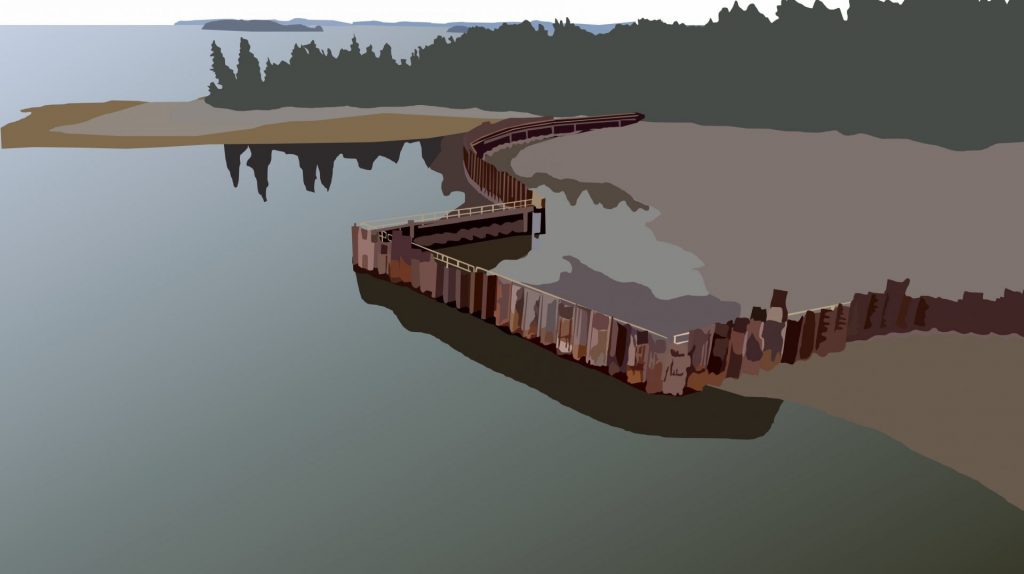
While the treasure hunters work, Billy Gerhardt points out a cluster of flat rocks which he unearthed, which evoke the flat rocks of which the Smith’s Cove box drains were said to be comprised. The heavy equipment operator digs in the area with his excavator and unearths what appears to be a fragment of a vertically-aligned timber. The treasure hunters show the find to Rick Lagina, Doug Crowell, and Terry Matheson, the latter of whom expresses his opinion that the large rocks surrounding the timber lie in such profusion that they must have been placed there by man. Gerhardt removes more rock and earth surrounding the timber, revealing a wooden structure which Doug Crowell suggests might be the remains of a wharf or pier. In a later interview, Rick Lagina puts forth the notion that this new structure might simply be an extension of the slipway, or perhaps a much older structure on top of which the slipway was constructed.
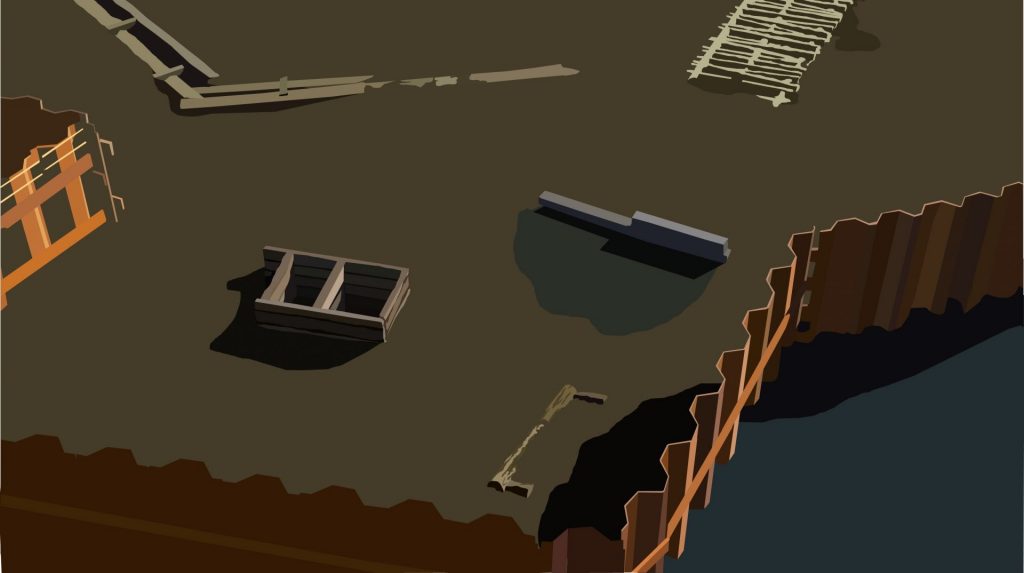
Later that day, Terry Matheson and Dave Blankenship head to the Money Pit area, where Choice Drilling is busy sinking Borehole F-14 in the hope of intersecting the Shaft 2 tunnel. Matheson explains that they hope to encounter the tunnel somewhere between 89-105 feet below the surface. The drill reaches a depth of 89 feet without encountering anything other than in-situ soil, just as expected. The treasure hunters then examine a core sample taken from a depth of 99-105 feet- their target depth. Sure enough, the sample contains a large chunk of wood at the 100-foot depth, which Matheson suggests must constitute a piece of either the floor or ceiling of the Shaft 2 tunnel. Elated, the treasure hunters agree that they must locate at least one more piece of the Shaft 2 tunnel in order to fully determine its orientation, and subsequently the location of the original Money Pit.
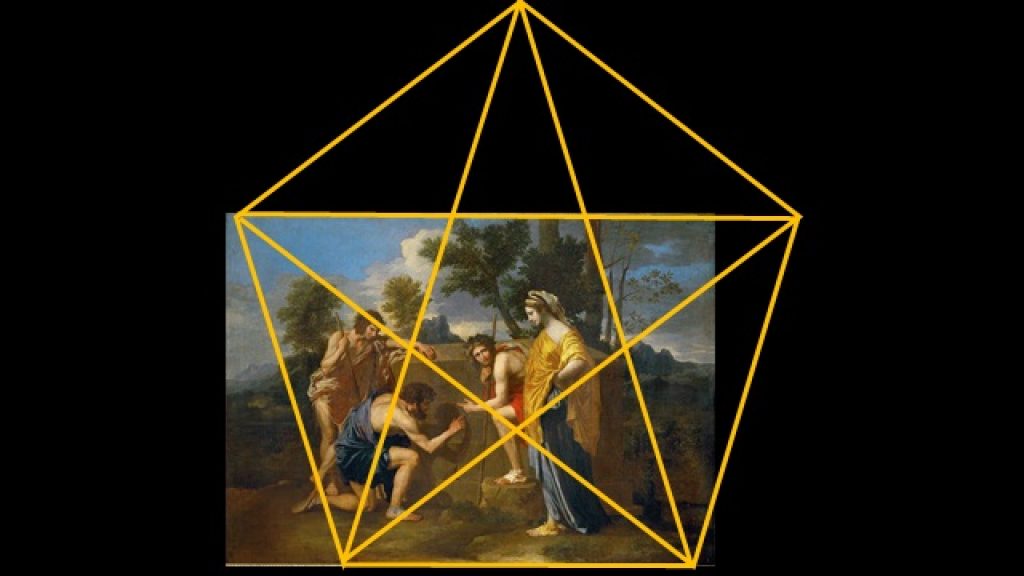
The next day, the Fellowship of the Dig meets in the War Room with Corjan Mol, who presented his own Oak Island theory the previous episode, and his fellow researcher, Chris Morford. Mol and Morford show the treasure hunters a 1650 self-portrait of classical French Baroque painter Nicolas Poussin and point out an illustration of a painting in its background. This painting depicts a lady wearing a hat in which is set the image of a human eye. Mol and Morford propose that this lady is the shepherdess who features in Poussin’s 1637 rendition of Et in Arcadia Ego.
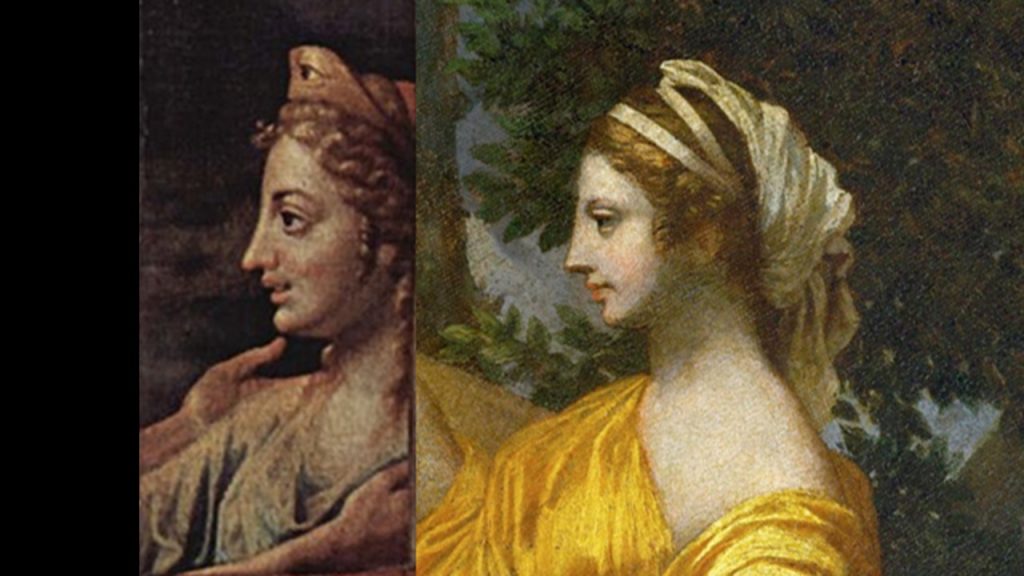
In the previous episode, Mol demonstrated that Poussins 1637 painting Et in Arcadia Ego appears to have been modeled on a portion of a pentagram, and showed the treasure hunters a map of Nolan’s Cross on which the painting and its pentagram were overlaid. In this episode, he demonstrates that the centre of the pentagram on which Et in Arcadia Ego was modeled appears to be the forehead of the shepherdess- the same place over which the third eye appears on the hat of the lady in Poussin’s self-portrait. Furthermore, Mol and Morford demonstrate that the centre of Et in Arcadia Ego, when the painting is superimposed overtop of Nolan’s Cross, appears to lie just southwest of the so-called ‘Eye of the Swamp’- a pond located at the tip of the Oak Island swamp around which geoscientist Dr. Ian Spooner discovered a ring of flat stones in Season 7, Episode 3. The treasure hunters express some surprise at this connection between the eye on the lady’s hat in Poussin’s self-portrait and the name which Marty Lagina dubbed the pond. The narrator then attempts to connect Poussin’s painting and the pond to the “All-Seeing Eye”, a symbol of Freemasonry and the United States mentioned back in Season 4, Episode 2, when Tony Sampson discovered a rock in a water will in the town of New Ross, Nova Scotia, bearing what he suggested might be a representation of the symbol. The treasure hunters, along with a skeptical Marty Lagina, thank the researchers for their time and agree to investigate the point of interest which they have prescribed.
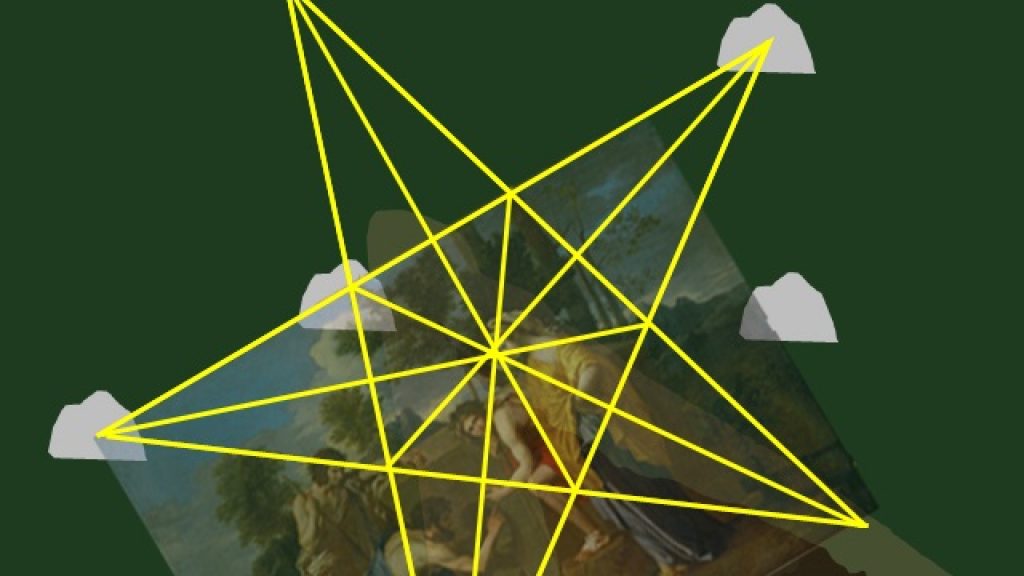
The next day, Steve Guptill meets with geoscientist Dr. Ian Spooner and three of his student assistants from Acadia University (namely Lauren Ruff, Chelsea Renaud, and Julia Crews) at the Oak Island swamp. Guptill and his students head out to the Eye of the Swamp in a dingy and collect several core samples of the swamp floor using a vibracore drill.
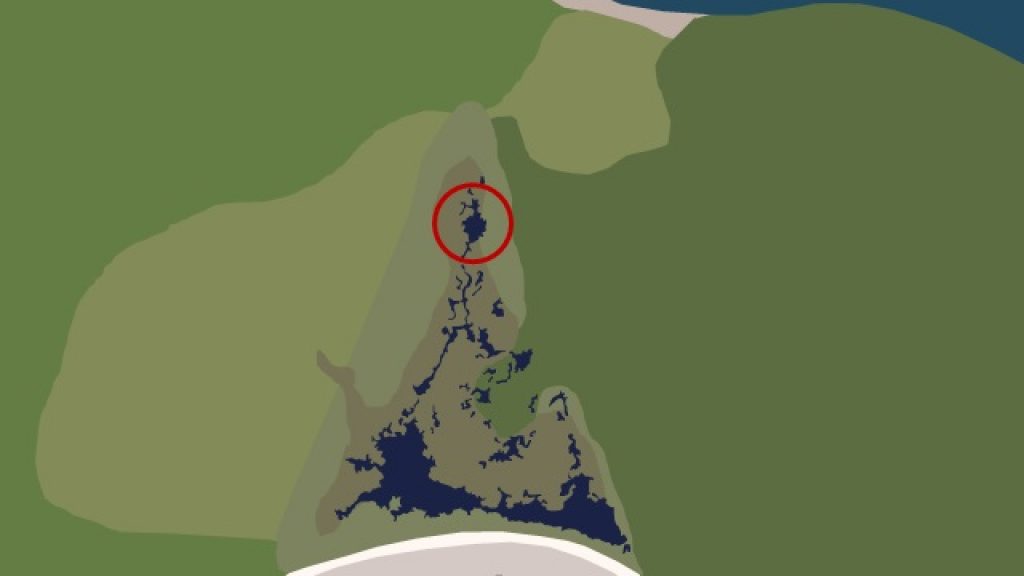
Meanwhile, Rick Lagina, Peter Fornetti, Gary Drayton, and Billy Gerhardt continue the excavation of the bump-out area at Smith’s Cove. Not far from the cofferdam wall, the treasure hunters unearth a massive wooden structure consisting of large parallel and perpendicularly-aligned logs attached by saddle-notches, along with a handful of wooden pegs. Drayton remarks that the only other place they have found wooden pegs on the island was in the U-shaped structure, and suggests that this new structure they unearthed may be connected to it in some way.
Rick Lagina notes that the structure appears to be surrounded by packed clay, prompting the narrator to remind us that puddled clay was said to have been found on one or more of the nine oak log platforms unearthed at regular 10-foot intervals in the Money Pit. The treasure hunters reluctantly agree to postpone their excavation of the structure and wait for an assessment by archaeologist Laird Niven.
The next day, the Fellowship of the Dig meets in the War Room with Tom Nolan and Dr. Ian Spooner. Spooner, who has analyzed the samples that he and his students extracted from the Eye of the Swamp, shows the treasure hunters a diagram of one of the samples and informs them that lower end of the sample contains what appears to be disturbed earth. “How do I know it’s disturbed?” Spooner asks. “It’s because we’ve got interlayered organic matter and till. You just can’t get that [naturally].” The geoscientist goes on to explain how he carbon dated a sample of wood found overtop of the disturbed earth from 1600 to 1700.
“So what you’re saying,” clarifies Marty Lagina, “is in 16-something, somebody dug a hole there.”
“Right,” Spooner confirms.
Spooner then shows the treasure hunters a twig he extracted from another core sample, which he carbon dated from 1674-1778. This data, coupled with the carbon dating of the wood from the previous core sample, led him to deduce that the aforementioned swamp excavation must have taken place between 1674 and 1700- a date range which corresponds with many Oak Island discoveries made over the years, particularly those made throughout Season 5.
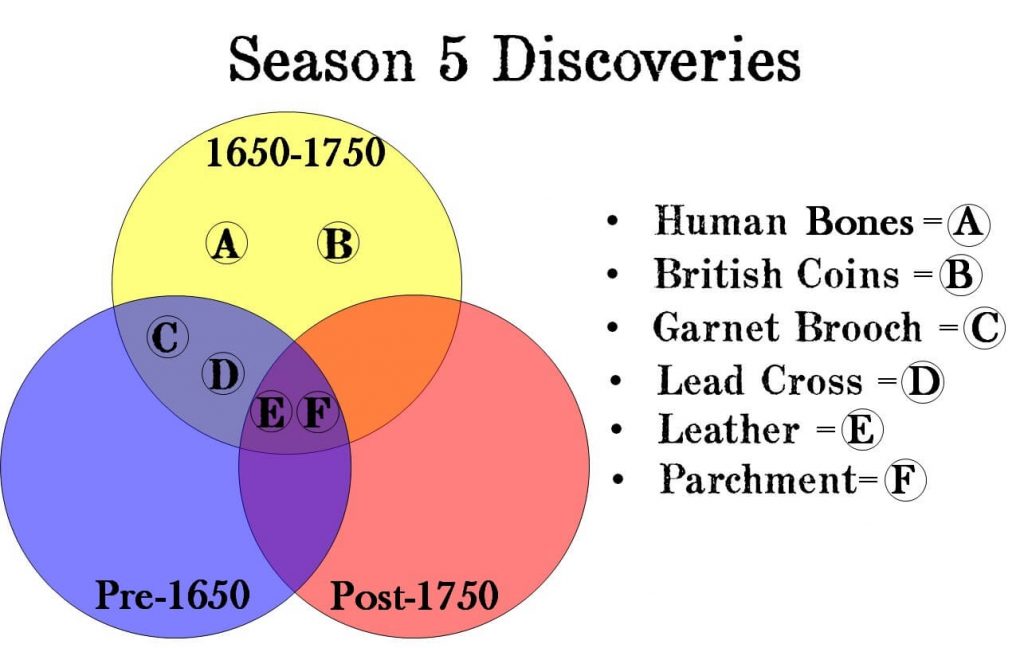
When prompted by Rick Lagina, Tom Nolan discloses that his father, Fred Nolan, had a particular interest in the Eye of the Swamp due to the fact that, no matter how much water he pumped from it, it always remained wet.
Before concluding his presentation, Dr. Spooner informs the team that the carbon dating of another twig located near the bottom of one of his core samples appeared to indicate that the swamp first formed around 1220 A.D. Marty Lagina remarks that this theory corresponds with the popular notion that the medieval Knights Templar are behind the Oak Island mystery.
Finally, Rick Lagina shows Dr. Spooner Zena Halpern’s mysterious map of Oak Island, first introduced back on the Season 4 premiere, and its reference to a Templar voyage to the island in 1179 A.D. The geoscientist says that he would “like to look at [the map] more closely to just see how it matches up with what [he and the crew] think might have existed at that time.”
Analysis
The Wharf
In this episode, the Fellowship of the Dig discovered an enormous wooden structure within the bump-out area of the Smith’s Cove cofferdam containing large logs and wooden pegs- the same materials of which the U-shaped structure is comprised. Doug Crowell and Laird Niven opined that the structure bears some resemblance to a wharf or pier.

Dr. Spooner’s Second Analysis of the Swamp
In this episode, geoscientist Dr. Ian Spooner of Acadia University, along with three student assistants, collected core samples of the Eye of the Swamp- the pond located at the Oak Island swamp’s northern tip. In a War Room meeting at the end of the episode, Dr. Spooner informed the Oak Island crew that the samples contain evidence that the swamp first formed around 1220 A.D., and that the floor of the Eye of the Swamp was disturbed by man sometime between 1674 and 1700- the latter being a date range which corresponds with many Oak Island discoveries made over the years, and the former corresponding with the popular theory that the Knights Templar are behind the Oak Island mystery.
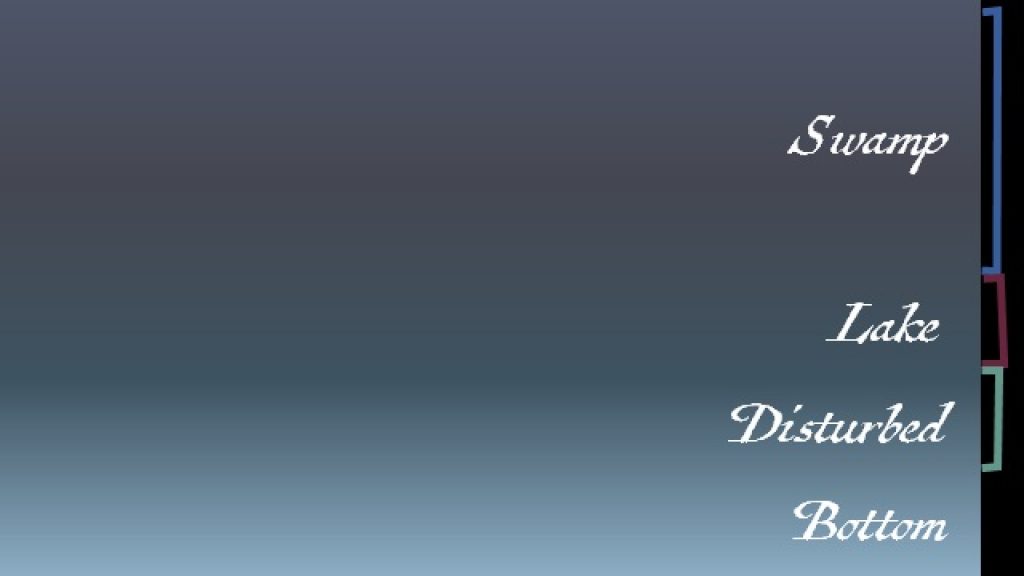
As Spooner acknowledged in this episode, his analysis of the Eye of the Swamp core samples differs from a previous assessment he made back in Season 7, Episode 3, when he extracted core samples from the ‘Ship Anomaly’ in the Oak Island swamp. In the earlier episode, Spooner concluded that the swamp was only three or four hundred years old, and supported trees and other forms of terrestrial vegetation prior to its transformation into a wetland.
Thanks for Watching!
Thanks for watching! If you enjoyed this article and would like to help support this website, please check out our online bookshop:







R J Daniels
The “Eye of the Swamp” formation is radiocarbon dated to 1220. This does not date the swamp proper.
The swamp probably formed 1674-1700 when someone dug in the pond north of the swamp.